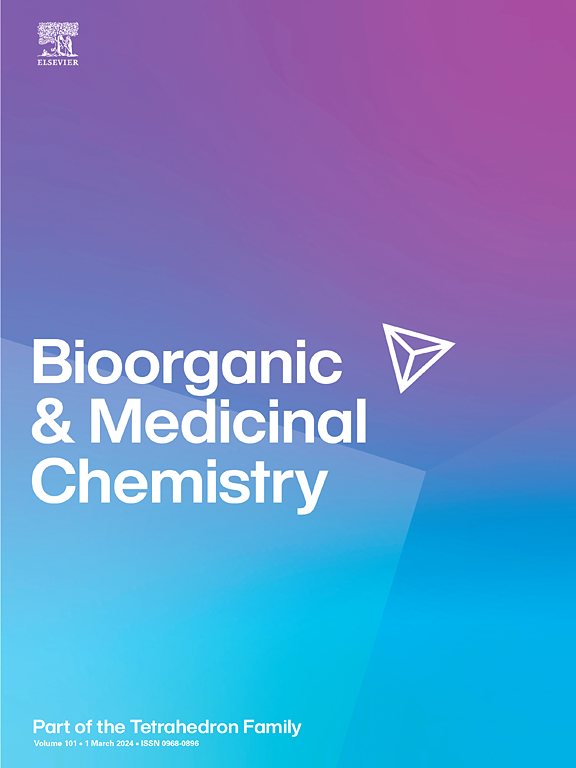Design, synthesis, and biological activity of human glutaminyl cyclase inhibitors against Alzheimer’s disease
IF 3.3
3区 医学
Q2 BIOCHEMISTRY & MOLECULAR BIOLOGY
引用次数: 0
Abstract
Human glutaminyl cyclase (hQC) has emerged as a critical target in Alzheimer’s disease (AD) due to its role in generating pyroglutamate-modified amyloid β (pE-Aβ). In this study, 13 compounds were designed as target compounds by fragment-based drug design (FBDD) and molecular docking, and subsequently assessed for drug-like properties and predicted inhibitory activities through ADMET analysis and Uni-QSAR modeling. Target compounds were synthesized via systematic multi-step approaches, with acceptable yields. The in vitro hQC enzyme inhibition assay revealed that all target compounds exhibited superior inhibitory activity compared to the reference compound PBD150 (140.50 0.93 nM), with compounds A3 (3.36 0.90 nM), A4 (3.20 1.15 nM), B1 (3.99 0.99 nM), and B2 (3.64 0.98 nM) standing out for further investigation. Further, molecular dynamics (MD) simulations were conducted on compounds A3, A4, B1, and B2, revealing the stability and binding interactions of the compounds within the hQC active site over a 200 ns simulation period. Then, the results of binding free energy calculations validated the superior binding affinities of compounds A3, A4, B1, and B2 than PBD150. These findings highlight A3, A4, B1, and B2 as promising hQC inhibitors, offering insights for AD drug development.

求助全文
约1分钟内获得全文
求助全文
来源期刊

Bioorganic & Medicinal Chemistry
医学-生化与分子生物学
CiteScore
6.80
自引率
2.90%
发文量
413
审稿时长
17 days
期刊介绍:
Bioorganic & Medicinal Chemistry provides an international forum for the publication of full original research papers and critical reviews on molecular interactions in key biological targets such as receptors, channels, enzymes, nucleotides, lipids and saccharides.
The aim of the journal is to promote a better understanding at the molecular level of life processes, and living organisms, as well as the interaction of these with chemical agents. A special feature will be that colour illustrations will be reproduced at no charge to the author, provided that the Editor agrees that colour is essential to the information content of the illustration in question.
 求助内容:
求助内容: 应助结果提醒方式:
应助结果提醒方式:


